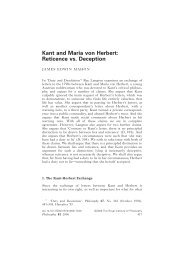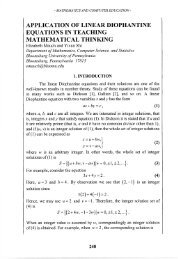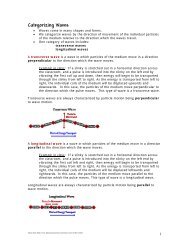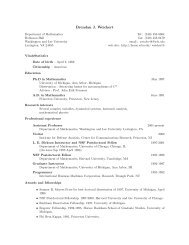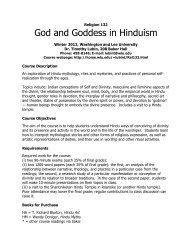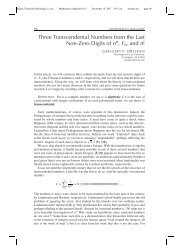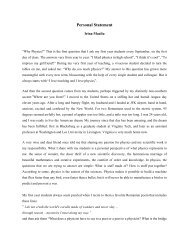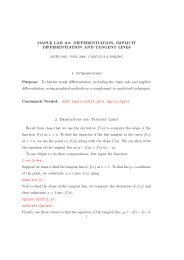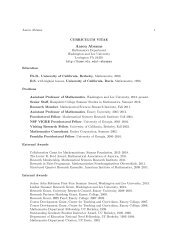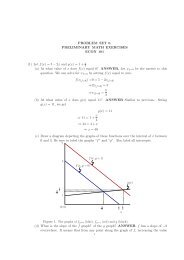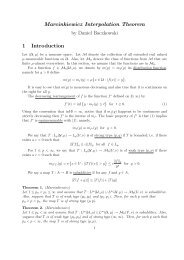comparative assessment of decentralization in africa: ethiopia desk ...
comparative assessment of decentralization in africa: ethiopia desk ...
comparative assessment of decentralization in africa: ethiopia desk ...
- No tags were found...
Create successful ePaper yourself
Turn your PDF publications into a flip-book with our unique Google optimized e-Paper software.
figure cont<strong>in</strong>ues to <strong>in</strong>crease. Intended to range <strong>in</strong> population size from 100,000 to 120,000, it isclear that woredas fall outside this range (see Tegegne, 2007).Regional states <strong>in</strong> Ethiopia have considerable constitutional protections. The most unique <strong>of</strong>these is the aforementioned provision (<strong>of</strong> Article 39), which guarantees Ethiopia’s regions a rightto secede, albeit upon completion <strong>of</strong> a substantial political process that <strong>in</strong>cludes supermajorities<strong>in</strong> regional legislative action and a subsequent referendum, followed by approval from the upperchamber <strong>of</strong> the national legislature known as the House <strong>of</strong> Federation (HF). The Constitutioncreated the HF to represent the regional states. It has limited power <strong>in</strong> many areas <strong>of</strong> lawmak<strong>in</strong>g,relative to the lower House <strong>of</strong> Parliament, but substantial power <strong>in</strong> shap<strong>in</strong>g revenue distributionsfor decentralized governance. F<strong>in</strong>ally, the Constitution also <strong>in</strong>stituted a reserve power clause thatensured residual powers for the regional states. There is thus a significant vertical division <strong>of</strong>authority between the center and the regions, as will be further elaborated <strong>in</strong> our discussion <strong>of</strong>―Authority‖ and ―Autonomy‖ below.Woredas (or districts) are also well ensconced <strong>in</strong> ord<strong>in</strong>ary law and are on solid <strong>in</strong>stitutionalfoot<strong>in</strong>g, though they were not established by the federal Constitution itself. Rather, each regionalstate has passed its own constitution with provisions for the woredas, which were givensubstantial powers nationwide with the District Level Decentralization Program (DLDP)beg<strong>in</strong>n<strong>in</strong>g <strong>in</strong> 2001.We may thus say that the <strong>decentralization</strong> <strong>of</strong> formal political authority <strong>in</strong> Ethiopia isconsiderable. However, to preview the argument on <strong>in</strong>termediate objectives, we may also saythere are significant limitations <strong>in</strong> the degree <strong>of</strong> autonomy, accountability, and capacity that maybe found at subnational levels. It is precisely <strong>in</strong> the formal balance <strong>of</strong> power between levels <strong>of</strong>government that Ethiopia has advanced farthest; we will have cause to elaborate on thesignificant limitations to <strong>decentralization</strong> <strong>in</strong> greater detail <strong>in</strong> Section 2.1.4 HISTORY OF DECENTRALIZATIONThe stated rationale for regional <strong>decentralization</strong> <strong>in</strong> Ethiopia—a rationale that will beproblematized <strong>in</strong> Section 3 (―Political Economy‖)—was to split with the centralized governance<strong>of</strong> the Derg regime, and to accommodate Ethiopia’s nationalities. Decentralization began <strong>in</strong>Ethiopia <strong>in</strong> the years after 1991, as the Derg collapsed <strong>in</strong> the face <strong>of</strong> armed challenges from thecomb<strong>in</strong>ed forces <strong>of</strong> the EPRDF, led by two opposition movements that first took root <strong>in</strong> thenortheastern part <strong>of</strong> the country among Eritrean and Tigrayan peoples: the EPLF and TPLF.With Prime M<strong>in</strong>ister Meles Zenawi (1995–present) at its head, the TPLF became the lead<strong>in</strong>gorganization <strong>in</strong> regime transition, <strong>in</strong> the draft<strong>in</strong>g <strong>of</strong> the new Constitution, and <strong>in</strong> the EPRDFcoalition government that followed. Meanwhile, under Isiaias Afwerki, the EPLF foundedmodern Eritrea, splitt<strong>in</strong>g <strong>of</strong>f from Ethiopia <strong>in</strong> 1993. For more on the timel<strong>in</strong>e <strong>of</strong> <strong>decentralization</strong>,see Appendix 2.Initially, the TPLF sought regional <strong>decentralization</strong> as a means to ―hold together‖ the peoples <strong>of</strong>Ethiopia. While the TPLF led the EPRDF, the opposition to the Derg also drew support from ahost <strong>of</strong> other nationalities, <strong>in</strong>clud<strong>in</strong>g the Oromo and the Somali. Accommodat<strong>in</strong>g thesemovements and peoples seemed the first step <strong>in</strong> state reconstruction. However, the EPRDFquickly developed top-down patterns <strong>of</strong> governance—led by the TPLF—that pushed <strong>in</strong> thedirection <strong>of</strong> more centralized federation (cf. Keller, 2002). TPLF leaders <strong>in</strong> the coalition4 ETHIOPIA DESK STUDY



